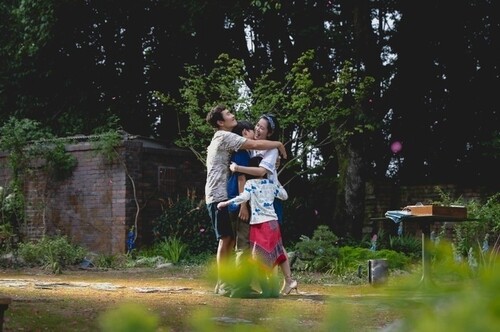*Editor’s note: K-VIBE invites experts from various K-culture sectors to share their extraordinary discovery about the Korean culture.
Kim Wolf's 'K-Geography' Story: A Special Freediving Experience
By Kim Wolf (Photographer, marathon runner)
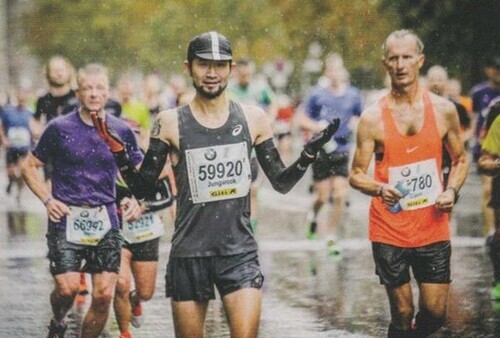
For me, freediving is remembered as "the act of standing again at the point where I had once failed."
Returning to the site of failure, to stand again before a challenge—fear often comes first, the fear that I might fail once more.
You must face the problem head-on, take responsibility for the consequences, and bear the stigma of failure. At the very least, if you understand the consequences of your actions, you know not to repeat the same mistake twice—or three times. In a society that leaves no room for failure, it’s only natural that we do everything we can to avoid it altogether.
 |
| ▲ Freediver Kim Jeong-seon by photographer Kim Sung-soo. (PHOTO NOT FOR SALE) (Yonhap) |
In a life lived only once, where success is constantly compared and measured, the world becomes cold, and we’re too busy learning shortcuts. The courage to fail is becoming increasingly rare.
“Everything in my life has gone smoothly so far, so I wanted to take on something truly difficult. That’s why I applied for the freediving instructor course.”
These were the words of Tae-woong, a fellow trainee I met during the freediving instructor course—a course that involves all underwater activities performed while holding your breath. I admired him.
It was the summer of four years ago, when COVID-19 had cut the world off from itself.
Wearing masks, we dove into the ocean off Jeju Island. Meeting Tae-woong there was a stroke of luck. He passed the difficult course with ease and generously shared many tips with me, who struggled every step of the way.
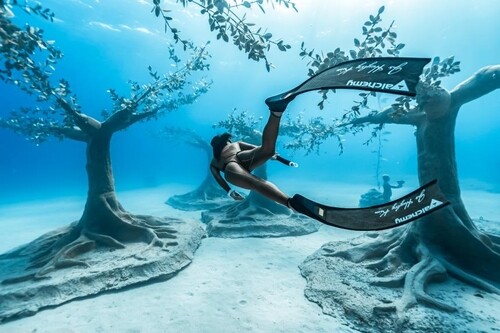 |
| ▲ Freediver Kim Jeong-seon by photographer Kim Sung-soo. (PHOTO NOT FOR SALE) (Yonhap) |
Indeed, the freediving instructor course was the most challenging experience of my life.
Underwater, my body would not obey my mind. That summer was a string of mistakes and failures. Among the most daunting of all was the depth diving module. Jeju’s breathtaking beauty stood in sharp contrast to the grueling nature of this part of the training.
40 meters deep.
On land, 40 meters is a distance anyone can sprint across holding their breath—if they put their mind to it. But descending 40 meters underwater without breathing is a different story. The nature of water, which does not compress, causes significant changes in air pressure and volume underwater.
With every 10 meters of depth, the pressure doubles or triples, and the volume of air halves or shrinks to a third. By the time you reach 30 meters, your lungs have shrunk to a quarter of their original size—and beyond that, they can’t compress any further.
At 40 meters, the pressure is five times that of the surface. To protect the now fist-sized lungs, the body reacts: blood flows in to cushion them, and the spleen—our hidden reserve—activates like an emergency power bank, aiding survival.
All mammals have a natural diving reflex, a survival switch that turns on underwater. But humans cannot rely on instinct alone. Without skill and training, we cannot survive underwater.
This is largely due to the human face—specifically the structures within it. The word for “face” in Korean includes gul (굴), meaning “cave” or “hollow space.” Within the human face, there are air-filled cavities called sinuses and the Eustachian tubes—delicate, narrow passages. These all form a single system of hollows.
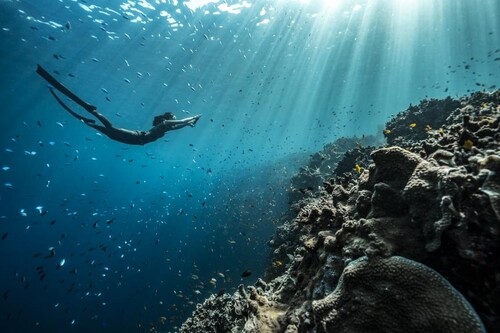 |
| ▲ Freediver Kim Jeong-seon by photographer Lee Soo-yeol. (PHOTO NOT FOR SALE) (Yonhap) |
When the volume in these spaces decreases due to pressure changes, we feel pain. It’s that familiar sensation you get when a plane takes off or you ride an elevator—your ears pop. But underwater, those changes in pressure are far greater.
If you can’t properly equalize the pressure in your facial cavities, the pain becomes unbearable, and you simply cannot descend further. What you need isn’t brute strength of mind—it’s smooth, practiced technique.
Unlike other animals, all human muscles can improve their function through practice—albeit slowly.
Among them, mastering pressure equalization—managing the pressure within the face—goes beyond physical muscle use; it requires the ability to switch the nervous system on and off at will.
The world of pressure equalization is full of contradictions and paradoxes from both a biomechanical and physiological perspective.
When descending, the body is positioned head-down, yet air, by nature, wants to rise. If the glottis—the gateway between the face and lungs—opens, the air in your face will be lost.
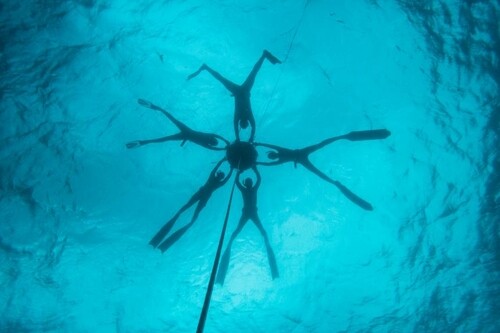 |
| ▲ Freediver Kim Jeong-seon by photographer Kim Wolf. (PHOTO NOT FOR SALE) (Yonhap) |
The glottis only opens when speaking and usually remains closed. Ironically, if you try to forcibly keep it shut, it tends to open. The only way to keep it closed and retain air in the face is to stay completely relaxed and comfortable from start to finish.
To perform pressure equalization by applying overpressure within the face, you must relax every facial muscle except the few necessary to equalize.
If tension builds elsewhere, or if you over-focus on the act of equalizing, the amygdala becomes activated. Blood flow increases in the face, which raises the likelihood of failure. Pressure equalization must be performed early, just enough, before problems arise. Overdoing it makes it harder to equalize later.
When you reach a depth where equalization fails—your failure depth—pain stops you from descending further. That depth varies day by day, depending on your physical condition. Even a world champion can’t overcome it. The only option is to ascend.
And then, in that same spot and under the same conditions, you make the same mistake again. No matter how many times you try to do it right—it just doesn’t happen.
Standing once again before that point of failure becomes a repeated experience.
If I can’t even manage my own body, how can I ever hope to achieve something bigger?
Yet, looking back, I realized—that was what I liked most about it. Returning to the site of a mistake, confronting the challenge again—there haven't been many such chances in my life.
When else had I given up so many times, yet kept coming back? Had I ever pursued something with this kind of earnest heart, without anyone telling me to?
Even in failure, even when forced to stop by hitting my limits—I consoled myself, reflected, and moved forward again. There was no reason I had to.
And yet—I found the courage to rise again.
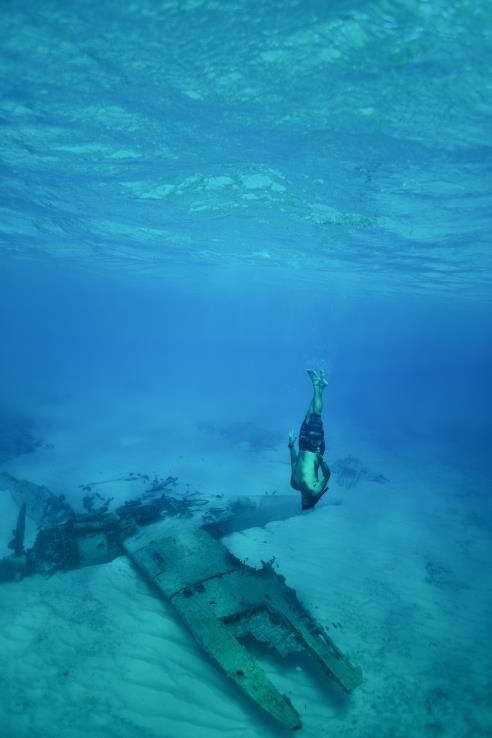 |
| ▲ Freediver Kim Jeong-seon by photographer Kim Wolf. (PHOTO NOT FOR SALE) (Yonhap) |
Though I’ve been taught the fastest way is best in this vast world, freediving taught me to navigate the slow, narrow, and winding path on my own.
The version of me I meet underwater is weaker than expected—yet growing stronger each time, to my own surprise.
So what if I keep making mistakes and failing to reach my depth goals?
I still came back up, having rescued myself from the deep.
In freediving, promising yourself a “next time” is routine. Each breath at the surface is all the sweeter because of the effort it took to return. I’ve come too far to go back to where I once failed.
Standing once more at the site of failure—that’s part of the freediving life. And it is my life, too.
This summer, I will challenge freediving again. And as always, I will meet a new version of myself—one that has grown stronger through failure. That moment of wonder awaits.
(C) Yonhap News Agency. All Rights Reserved









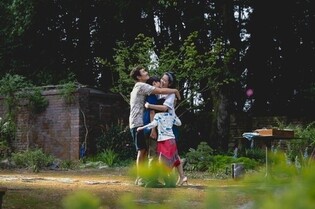


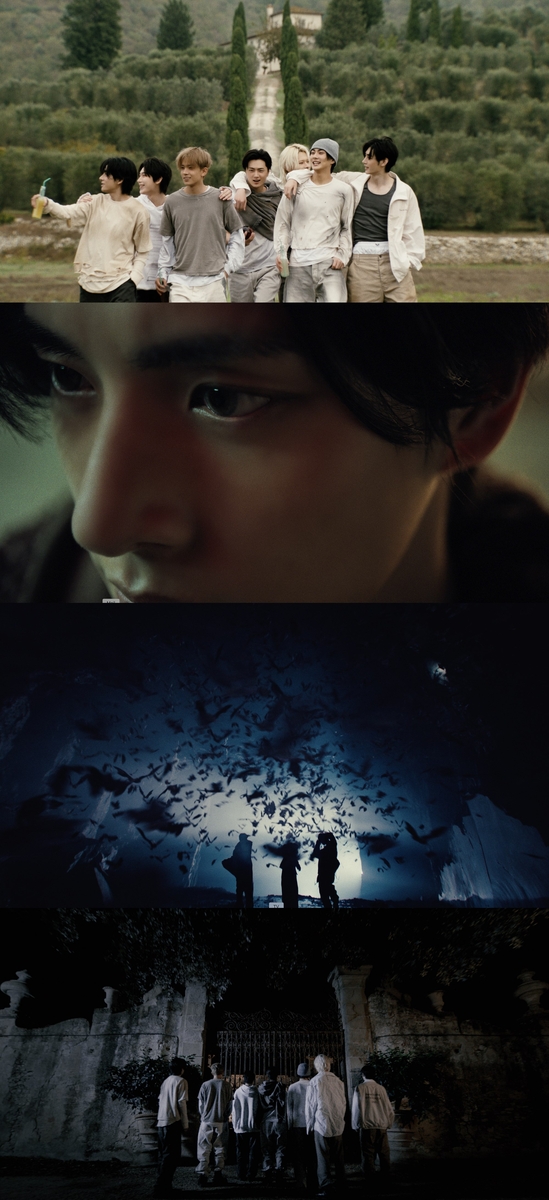
![[가요소식] TXT '9와 4분의 3 승강장에서…' 스포티파이 2억 스트리밍](https://korean-vibe.com/news/data/20251220/yna1065624915960696_833_thum.jpg)


![[가요소식] 베이비몬스터, '슈파 두파 러브' MV 공개](https://korean-vibe.com/news/data/20251219/yna1065624915960276_172.jpg)






